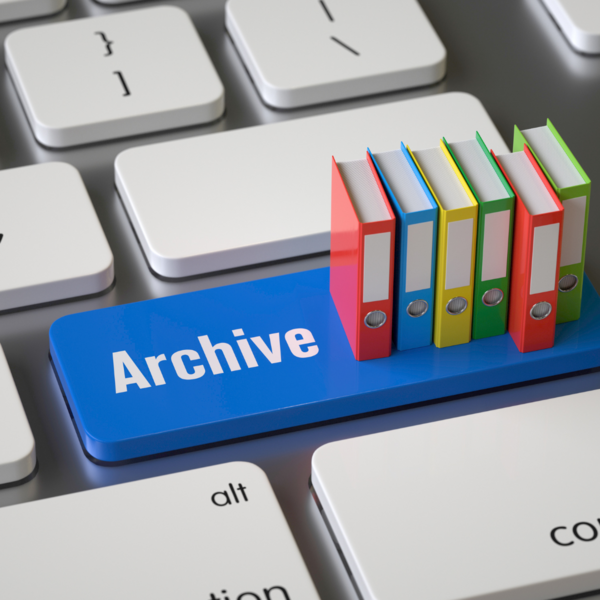Mugo partner since 2018
B2B publisher applies professional development process to innovate on WordPress CMS.
Business of Apps, a growing London-based B2B publisher, wanted to tap into the enormous ecosystem of designers and consultants that has grown up around WordPress, the world’s most popular content management system.
“It’s the leading CMS, isn’t it?” said James Cooper, the director of London-based Soko Media, the parent company for Business of Apps, which focuses on the interests of those building, marketing and monetizing apps. “There’s lots of people out there who you can work with on it; it’s not in any way niche. I have had previous experience with what you might call ‘bespoke tech,’ and I did not want to go down that path again.”
But Business of Apps also knew that it needed to implement a more disciplined, controlled approach to site management – a regime that’s not particularly common in WordPress environments, where adding a new third-party plugin is a matter of just a few clicks.
So it has turned to the team at Mugo Web to manage, test, and deploy all changes to its WordPress publishing environment. The results are stable, high-performance custom sites that Cooper said “push the edge” of WordPress’s capabilities to support his fast-paced business.
Business of Apps first began working with Mugo Web in 2016 on an email automation project that’s typical of the challenges many WordPress users face.
WordPress’s MySQL database serves as the main repository for Business of Apps’ content, but the core CMS offers only rudimentary email transmission features, particularly for publishers who want to carefully track recipient engagement. And most third-party plugins focus on capturing email subscribers, not creating the newsletters themselves.
Mugo Web built custom code for exporting content stored in WordPress to MailChimp templates, saving the Business of Apps team the tedious task of copying and pasting content between the two platforms.
The system is still in use today, even after Business of Apps transitioned to a new outbound marketing system. Email newsletters remain an important source of audience engagement for the publisher, Cooper said. Soko Media now has more than 25,000 subscribers across all its brands, which also includes a live events series and industry awards program.
Cooper found Mugo Web via a web search on some of the underlying technical issues for the project, he said, and was immediately impressed with both the team’s expertise and work culture. “They obviously knew what they were talking about,” he said, “but they also were very friendly, and I sensed that they had a lot of integrity.”
In fact, the project went so well that Mugo has become the defacto dev manager for all Business of Apps site projects, through a highly integrated process that encompasses job ticketing, code management, testing, and deployment.
Being focused on a fast-paced technology industry like app development, Cooper and his team are constantly looking for ways to innovate, both in terms of user experience and operational efficiency. The Mugo Web team adds stability to this evolution.
“Really, processes are the key, regardless of what CMS or technology you are using,” said Mugo Web project manager Noble Hurst, who is part of Mugo’s Business of Apps team, along with developer Carlos Mauri. “Whenever you introduce third-party code, it can be volatile, so we’ve implemented a process by which we review and test every change, as you would with any enterprise software.”
“They’ve put out a proper platform and system for development, proper code management and version control,” Cooper said. “And this also helps us with working with other third parties, like designers, who can plug into the system and work on projects without conflicts.”
The feature request and dev process is encapsulated within a web-based job ticketing system, Assembla, that Mugo Web uses for all its work. Cooper and his team at Business of Apps submit an idea for a new feature via a ticket, which creates a clear, trackable communication thread about the project. Sometimes the request is for review of a specific plugin; sometimes the publisher is looking for ideas about how to accomplish a broader business initiative.
Next, the Business of Apps and Mugo Web teams meet to discuss options for accomplishing the desired functionality. Mugo’s Mauri said that there are always several projects in progress at once, ranging from small modifications to major feature updates.
Depending on the requirements, the team may find an appropriate third-party plugin to extend WordPress’s capabilities. However, despite there now being about 60,000 of these extensions in the WordPress.org directory, the specific features required by Business of Apps may not be supported.
Additionally, while plugins from third-party developers may be tested against the WordPress core, they are not tested for compatibility with each other, creating the possibility of dreaded “plugin conflict” messages – exactly the sort of volatility that Business of Apps wants to avoid.
Regardless if Mugo Web builds the new functionality or helps select a pre-existing plugin, the code to be introduced is handled through a formal Git repository and workflow. It’s fully tested in a dev and staging environment and then rolled out in a controlled launch. The Business of Apps sites are hosted at WP Engine, a leading WordPress host, and the Mugo Web team manages, tests, and administers that environment.
It didn’t take long for the Business of Apps team to learn to appreciate the value of this formal process, Cooper said. “It’s the kind of stability I was looking for,” he said.
Mugo’s Mauri added, “We had a few meetings with them to explain the benefits, and from there I think they’ve come to understand why we do it this way … It’s really best for everyone.”
The scope of work Mugo Web manages for Business of Apps is limited only by the goals the publisher wants to achieve. “We probably do things that no one should be doing on WordPress,” Cooper joked.
Projects have ranged from on-page search engine optimization to advanced workflow tools.
Using Google Tag Manager and advanced analytics, Business of Apps can track response to specific native advertising placements in its vendor marketplaces.
A key revenue source for Business of Apps are its various marketplaces, directories where sponsor partners provide information about their company and services. The listings are presented as “native” advertising, and so are published from WordPress, as opposed to a conventional ad server.
Partners pay for featured placement in the directory, and being able to track response to these premium slots is a big part of growing revenue. So Mugo implemented a sophisticated intra-page tracking system, using Google Tag Manager, to report on activity based on content position.
The tagging strategy was developed by another partner agency, which Cooper cites as an example of the diversity of expertise available to WordPress users.
GTM, advanced analytics (including some custom reporting) and conversion tracking have been the focus of several projects, Mauri said. This includes the creation of a hidden interstitial to help analyze inbound traffic sources.
“Understanding the customer path is a big issue, so we spend a lot of time on these types of projects,” Mauri said.
Organic search traffic is a critical factor in Business to Apps success. The site’s content appears in more than 750,000 Google searches a month.
A big part of ranking successfully in Google searches is overall site performance, which also happens to be an area where unmonitored WordPress “plugin glut” can have the most negative impact. Mugo Web carefully tests each code extension in the WP Engine environment for performance.
The Mugo team also reviews general page layout for compliance with Google best practices, semantic content construction (such as information-rich headers), and general usability to encourage reader engagement, another key factor in search rankings. One such project included custom code to automatically create an on-page table of contents, based on header style, to make very long, SEO-rich pages landing pages easier for readers to navigate.
The Business of Apps editorial team works with other resources to develop and execute a keyword content strategy, Cooper said. The combined effort helps the Business of Apps sites continue to grow traffic and brand awareness.
Session length, a key indicator of user engagement that’s critical in B2B publishing, has remained steady during a period of dramatic growth for Soho Media. The number of site visitors has increased 300 percent over the last two years, indicating a successful SEO and reader retention program. Overall, unique visits per month have jumped from 100,000 to 500,000 during the Business of Apps relationship with Mugo Web, Cooper said, without any significant site instability or downtime. And the expanding audience has fueled growth across multiple lines of revenue.
WordPress may be the leading CMS on the planet, but very few websites have the workflow demands of a content publisher like Business of Apps.
Every day the site publishes news content, opinion columns, partnered-provided posts (which are automatically linked to the marketplace), research, and podcasts. Add in videocast replays and whitepaper listings on its sister domain, App Promotion Summit, and the content team has to concurrently manage dozens of complex content objects. Soko Media’s two domains now publish more than 4,000 indexed pages.
Mugo Web wrote a version-tracking extension to help with managing all that content. There are numerous third-party workflow plugins available, but the Business of Apps needs to track versions and user edits by various post types warranted a custom plugin.
Soko Media’s sites now run from consolidated, easy-to-manage WordPress instances.
Maintaining a consistent, reasonably simple data structure is essential for publishers like Soko Media that want to re-use content on multiple sites and online channels. But WordPress’s flexibility in allowing users to create custom post types can undermine this basic aspect of enterprise content management.
One of the early Mugo Web projects for Soko Media was consolidating the four independent WordPress sites it had launched since going into business about a decade ago into its two current domains. In addition to the usual challenges of internal content linking and plugin compatibility management, Mugo simplified the content structure while ensuring that the desired functionality that led to the creation of custom post types was preserved in the transition.
“This could have been high-risk; it could have gone wrong,” Cooper said. “But it went seamlessly.”
Consolidating on two WordPress instances has made managing Business of Apps content far more efficient, he added.
Soko Media will continue to aggressively look to explore new business opportunities, Cooper said, and he’s certain that will include ongoing changes and new features on its websites. Recently, Mugo Web implemented a custom-related content widget with the goal of extending user sessions and engagement.
In fact, the apps market is so dynamic that it’s impossible to predict exactly what the next major change might be, he said. But whatever the need, he’s confident that the development and site management process managed by Mugo Web will let his team innovate with the confidence that their web publishing platform is stable and ready to grow with the business.

Partner since 2025
Bruce County Public Library launches new, streamlined website for better staff and patron usability.

Mugo partner since 2025
Waukegan Public Library launched a new website, increased engagement from patrons, and streamlined workflows among staff.

HubSpot is a well-established and popular CRM that allows you to manage customer relationships. Among their marketing services, they have native newsletter management, which can help to foster a great relationship with your subscribers. Beyond relying on the default options for newsletter management, you can use the HubSpot API to tailor the customer's experience in selecting their communication preferences.

Recently, one of our clients came to us looking to archive an older website that was no longer being updated. The site still needed to be accessible to the public for reference purposes. Taking it offline was not an option due to its historical value.
Running the site on a traditional hosting environment meant paying for a full web server, application runtime, monitoring, and associated maintenance — all of which were unnecessary for a site that no longer required server-side processing.
If you have a legacy site that doesn’t require dynamic content, migrating it to AWS S3 and CloudFront can be a highly cost-effective solution, all while ensuring it remains accessible, secure, and efficient.
Automating website management tasks like SSL certificate renewal is a great way to save time and mitigate human error, particularly if you manage multiple websites. Learn how to automate SSL certificate renewal using Let’s Encrypt and Oracle Cloud Infrastructure DNS API.
Building a website often comes down to choosing between “best–of-breed” services and cost-effective solutions that meet your business needs while being relatively easy to manage. Here we explore AWS services for automated text messaging and email, and compare them with other 3rd party options in the context of work done for GoLibrary.
Newly revised rules from the ADA regarding digital accessibility mean libraries in the United States have until April 26th, 2026, to ensure they are conforming to WCAG 2.1 AA standards. What does this entail, and how can a library system start making content more accessible?

Tabbing through a web page can be a frustrating experience. The user tabs to access a menu, but with the keyboard's next tap, they’ve moved on to another page element and have to retrace their steps to access the desired content.
For users who rely on keyboard navigation, this can be a major accessibility roadblock. And for other site visitors, it’s just poor UX.
Fortunately, you can implement a fairly straightforward function in JavaScript called a “focus trap” to ensure users don’t leave the page area they’re in without intending to do so.